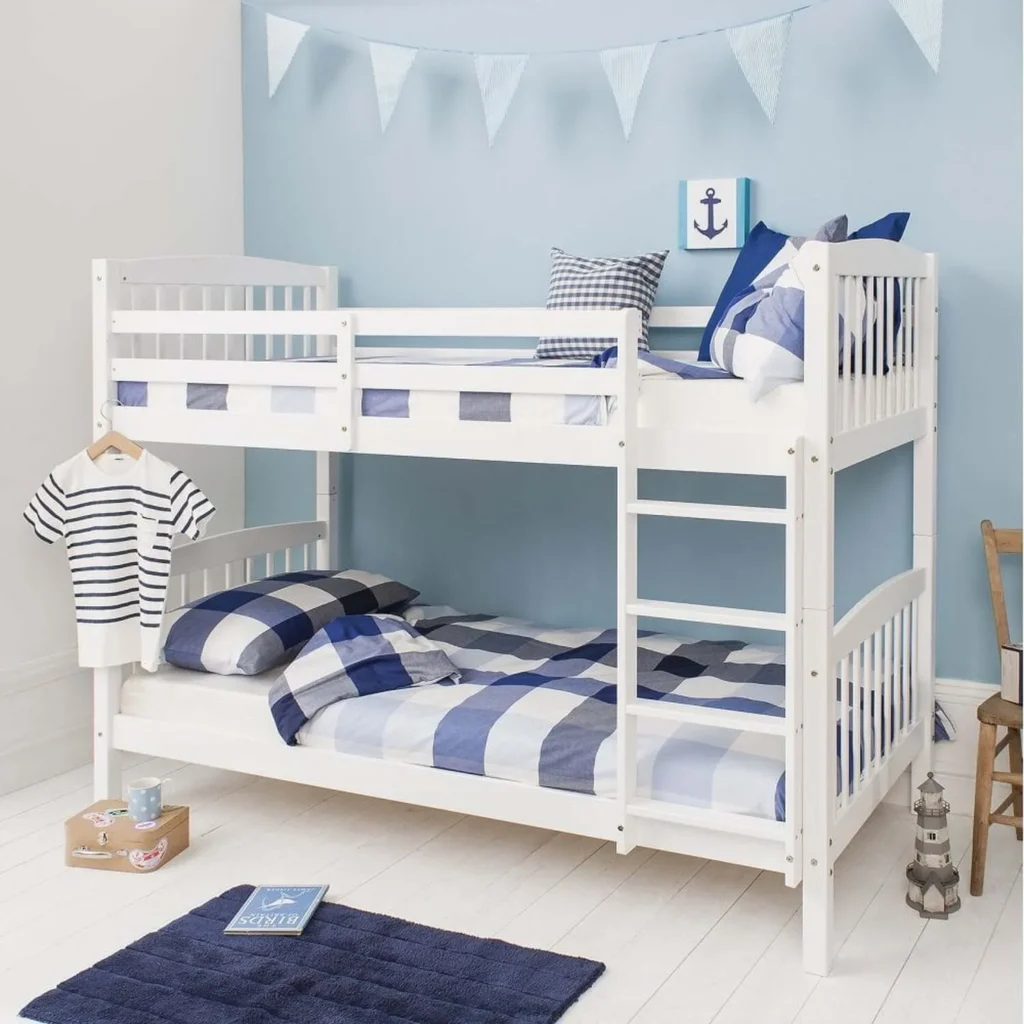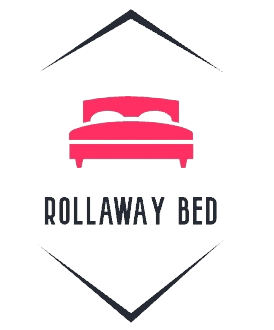Can a bunk bed really collapse from too much weight? Surprisingly, yes. According to the U.S. Consumer Product Safety Commission, thousands of bunk bed injuries occur each year—many due to structural failure or overloading.
If you’re a parent buying bunk beds for your children, a college student navigating dorm furniture, or even an Airbnb host setting up a small space, it’s crucial to know the bunk bed top weight limit. This simple figure can be the difference between peace of mind and a potential hazard.
In this guide, we’ll cover everything from standard weight limits to material comparisons, safety tips, and how to check if your bunk bed is safe—especially in 2025 where furniture design is evolving rapidly. Let’s dive in.
Table of Contents
What Is the Standard Top Bunk Bed Weight Limit?
Typical Weight Limits by Bunk Type
When it comes to bunk beds, the top bunk usually has a lower weight limit than the bottom. Here’s a breakdown:
- Children’s bunk beds: 150–200 lbs
- Adult-sized bunk beds: 250–500 lbs
- College dorm or military bunks: 300–400 lbs
- Heavy-duty models: Up to 800 lbs (rare, mostly commercial or custom)
Always consult the manufacturer’s manual, which typically lists exact load-bearing limits for both bunks.
Size Matters
- Twin over twin bunk beds: 150–250 lbs (top)
- Twin XL over queen/full: 200–400 lbs
- Full over full bunks: Can go up to 500 lbs (top)
- Loft beds (similar to upper bunks): Vary widely from 200 to 600 lbs
💡 Pro Tip: Don’t assume. Always check the label or instruction manual for official specs.
Factors That Affect Bunk Bed Weight Capacity

Several factors determine how much weight a top bunk can safely support:
1. Material Composition
- Solid wood (like oak or maple): Durable and strong, typically higher weight limits.
- Pine or particleboard: Weaker, lower capacity—common in budget models.
- Metal frames: Vary by thickness and weld quality. Industrial-grade metal supports more than hollow tubing.
2. Build Quality & Design
- Joint reinforcements, slat spacing, and frame thickness impact durability.
- Guardrail and ladder strength also play a role in overall structural integrity.
3. Manufacturer Testing Standards
Reputable brands often meet ASTM International safety standards, including rigorous stress testing and labeling.
✅ Look for certifications like ASTM F1427 or CPSC compliance for added peace of mind.
Bunk Bed Safety Guidelines You Should Never Ignore
Keeping the weight within the limit is just one piece of the safety puzzle. Here are key safety practices for any top bunk setup:
Mattress Specifications
- Top bunk mattresses should be no more than 6–8 inches thick. Thicker mattresses reduce guardrail effectiveness.
- Use bunkie boards or slatted bases for stability.
Guardrails & Ladders
- Guardrails must be present on all four sides, with gaps under 3.5 inches.
- Ladders should be securely attached and non-slip.
- Avoid detachable ladders for kids’ beds—they pose a higher fall risk.
Age Restrictions
- Children under 6 years old should never sleep on the top bunk.
- Enforce rules about no jumping or rough play on upper bunks.
Room Setup
- Ensure ceiling clearance is at least 36 inches from the top mattress.
- Place bunk beds away from ceiling fans, windows, or light fixtures.
Bunk Beds for Adults: Can the Top Bunk Hold You?
Yes—but not all bunk beds are created equal.
Choosing an Adult-Friendly Bunk Bed
If you’re shopping for a bunk bed that supports adults, look for:
- Reinforced steel or solid wood frames
- Weight limit of at least 350–500 lbs for top bunk
- Wider ladders and deeper guardrails
Recommended Models for Adults
Here are a few brands with high-capacity top bunks:
| Brand | Model | Top Bunk Limit |
|---|---|---|
| Max & Lily | Solid Wood Twin Over Twin | 400 lbs |
| Walker Edison | Metal Bunk Bed | 500 lbs |
| DHP | Miles Twin Loft Bed | 300 lbs |
| Francis Lofts | Custom Adult Bunk Beds | Up to 800 lbs |
Always verify product specs before purchasing.
How to Check If Your Bunk Bed Is Safe and Compliant
Before someone sleeps up top, go through this checklist:
1. Locate the Weight Limit Label
Most beds include a manufacturer sticker with safety information. If missing, check the manual or product listing online.
2. Inspect for Wear and Tear
- Look for loose screws, warped wood, or rusted joints.
- Avoid using second-hand bunk beds without inspecting integrity.
3. Reinforcement Tips
- Add extra wooden slats or a metal support bar.
- Use bunkie boards for mattress support if slats are too far apart.
- Tighten all hardware every 3–6 months.
If you’re unsure about safety, consult a licensed carpenter or contact the brand’s customer service.
Conclusion
The bunk bed top weight limit is more than a technical detail—it’s a key factor in choosing a safe, comfortable sleeping solution. Whether you’re furnishing a kids’ room, a college dorm, or a compact rental space, always prioritize quality materials, proven weight ratings, and safety features.
Double-check specifications, inspect for damage regularly, and never exceed manufacturer guidelines. Doing so ensures peace of mind and a better night’s sleep for everyone involved.
FAQs
What is the average top bunk weight limit for kids?
Most children’s top bunks can hold 150–200 pounds, depending on the materials and brand.
Can adults sleep on the top bunk?
Yes—if the bunk bed is rated for it. Look for heavy-duty models with a top bunk limit of at least 350–500 pounds.
Is metal or wood better for bunk bed weight capacity?
Solid wood (like oak) and steel frames are the most durable. Avoid MDF or particleboard if you need a higher weight limit.
How can I make my bunk bed support more weight?
You can add extra slats, bunkie boards, or metal reinforcements. Always check with the manufacturer before making structural changes.
Where can I find the weight limit for my bunk bed?
Look for a label or sticker on the frame or consult the instruction manual. You can also contact the brand directly or search their website.
🔗 Learn more about furniture safety from The Spruce. For durable and safe bunk beds, visit Best Rollaway Beds today!


